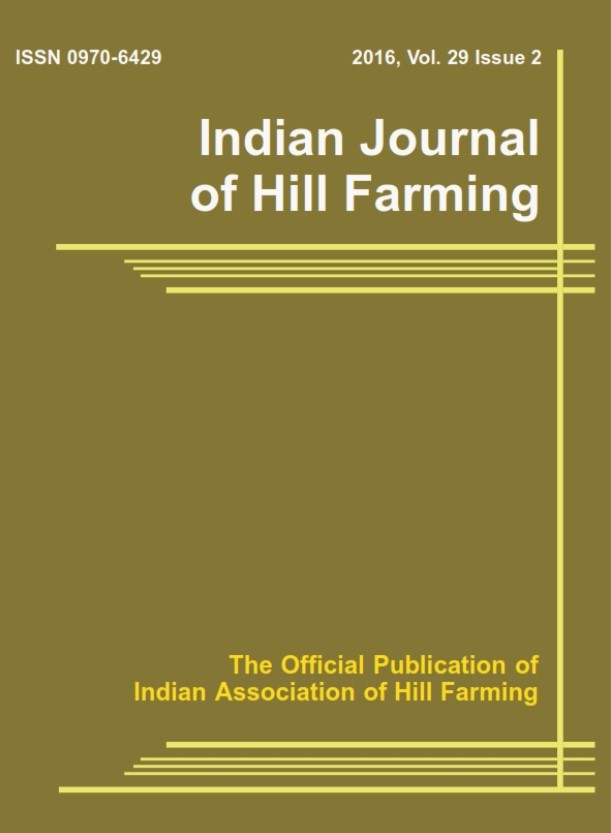Effect of integrated nutrient management on Clary sage (Salvia sclarea L.) at mid hills of Himachal Pradesh
DOI:
https://doi.org/10.56678/iahf-2024.37.02.12Keywords:
Essential oil content, Organic manures, Biofertilizer, Economics.Abstract
A comprehensive investigation was undertaken in 2017-2018 at the Department of Forest Products and Utilization, Dr. Yashwant Singh Parmar University of Horticulture and Forestry, Nauni, Himachal Pradesh, to assess the relative profitability and effectiveness of various nutrient management techniques on clary sage (Salvia sclarea L.) for growth parameters and essential oil content (%). A total of ten treatments were evaluated under a Randomized Block Design (RBD) with three replications, as follows: T1: Control; T2: NPK; T3: FYM; T4: Vermicompost; T5: FYM + NPK; T6: Vermicompost + NPK; T7: Jeevamrit (Jersey Cow); T8: Jeevamrit (Desi Cow); T9: Panchgavya (Jersey Cow); and T10: Panchgavya (Desi Cow). The results revealed that the treatment T6: Vermicompost + NPK recorded the maximum values across growth and yield parameters, including essential oil yield (21.45 l/ha), essential oil content (0.18%), spike yield per plant (107.26 g), and spike yield per hectare (11,917.68 kg/ha), followed by the treatment T5: FYM + NPK. The result clearly demonstrates that the synergistic use of organic manures and chemical fertilizers significantly outperformed individual treatments in terms of biomass and oil production. The highest yield and beneficial-cost ratio (1.69:1) for growing clary sage has been determined to be achieved with the NPK + Vermicompost treatment (90:60:30 kg/ha + 2 t/ha).
Downloads
Published
Issue
Section
License

This work is licensed under a Creative Commons Attribution-NonCommercial-NoDerivatives 4.0 International License.




